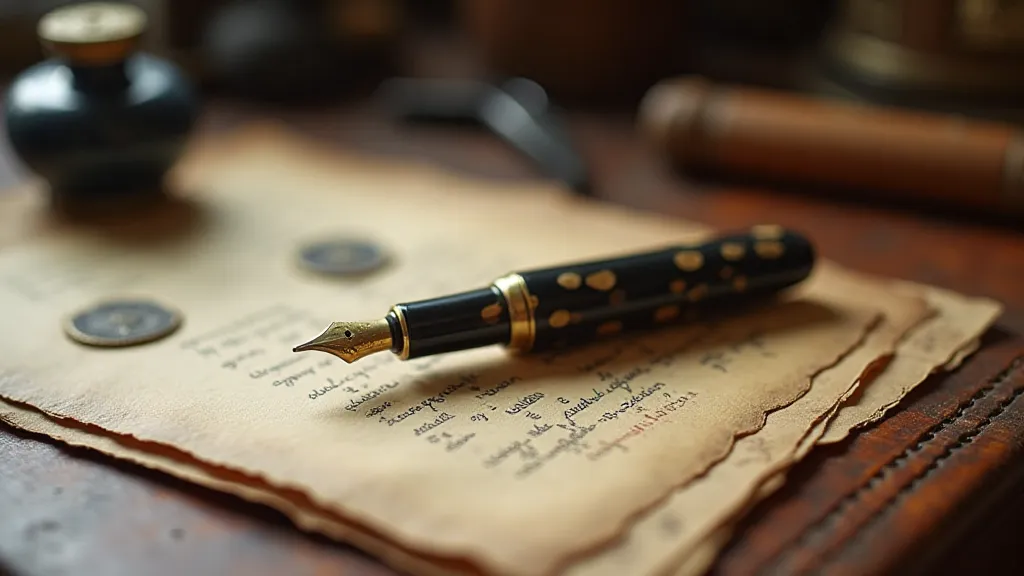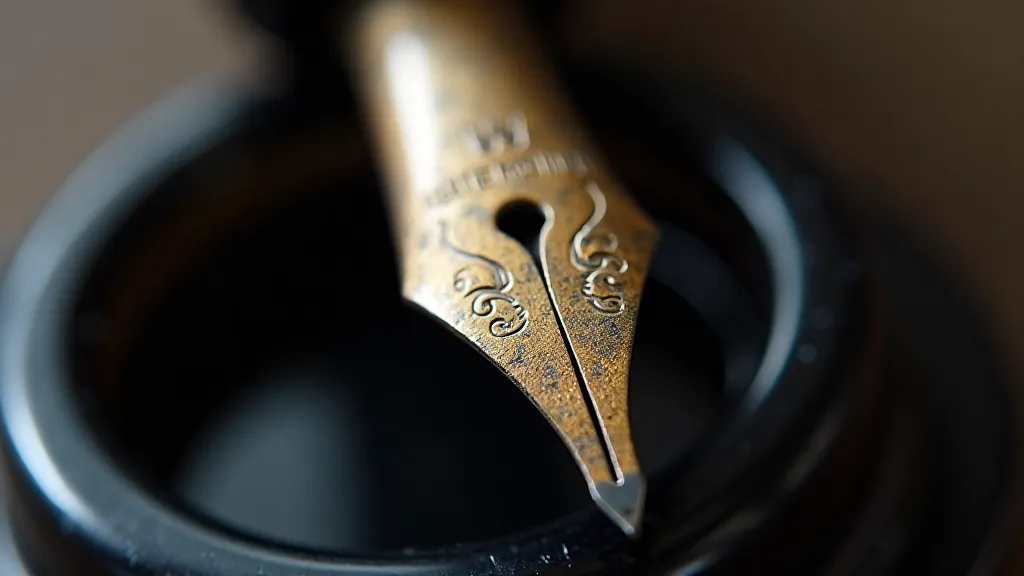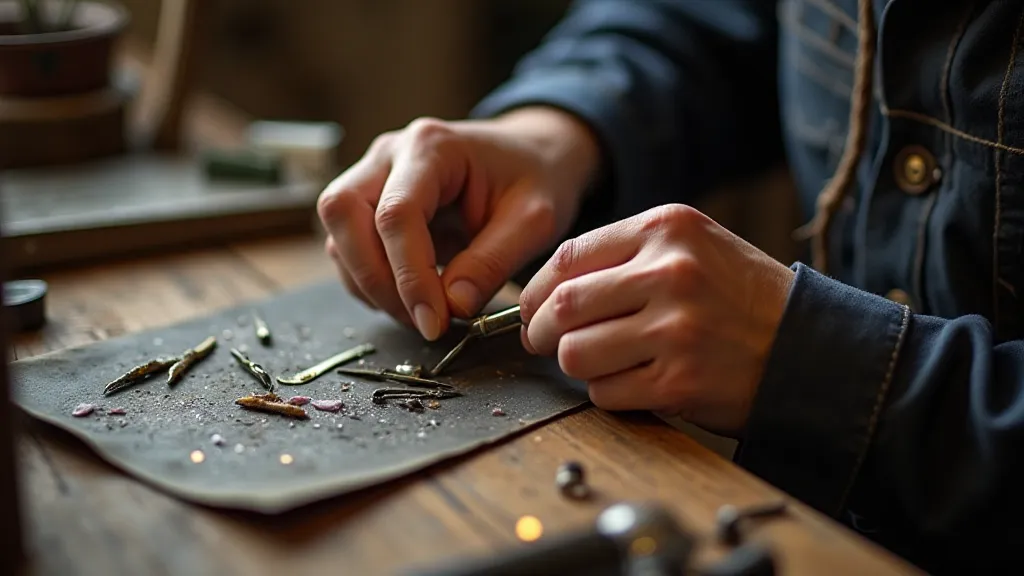A Cartographer of Moments: How Pen Shapes Chart Personal Journeys
There's a certain magic that clings to antique pens, a quiet resonance that speaks of bygone eras and the hands that wielded them. They’re more than just writing instruments; they're relics of personal journeys, silent witnesses to thoughts and emotions captured on paper. We collect them, catalogue them, analyze their construction, but often overlook the profound impact their design – their very shape and feel – had on the act of writing itself. Consider the idea that the design and weight of a pen can shape the way a writer experiences the act of writing, influencing their thoughts and emotions. It’s a surprisingly powerful notion, and one that deepens our appreciation for these remarkable objects.
I first understood this not through meticulous research, but through a feeling. I inherited my grandfather’s writing desk, a sturdy oak behemoth scarred with the ghosts of countless letters and documents. Alongside it, nestled in a velvet-lined box, lay a Conway Stewart Churchill – a substantial, torpedo-shaped pen crafted from mottled brown resin. It felt weighty, authoritative in my hand. Writing with it wasn’s merely writing; it was a deliberate act, a conscious immersion in a legacy. The heft and balance felt intrinsically linked to the formality of the writing, fostering a sense of considered prose that I wouldn’t have achieved with a lighter, slimmer pen. This experience sparked a fascination, not just for the pen itself, but for the symbiotic relationship between instrument and expression.

The Tactile Connection: Weight and Balance
The weight of a pen is often the first thing a collector notices. Early fountain pens, particularly those from the late 19th and early 20th centuries, tended to be heavier than their modern counterparts. This wasn’t solely due to the materials used – often hard rubber (ebonite) or early celluloid – but also because the technology for creating lighter, hollow barrels hadn’t fully matured. That weight, however, could translate to a feeling of substance, a sense of grounding that allowed for a slower, more deliberate pace of writing. Imagine a Victorian novelist, carefully crafting a sprawling narrative with a weighty Waterman’s Ideal – the pen a physical anchor, reminding them to consider each word with precision. This careful consideration is a key component to crafting stories that truly resonate, a transformation of ink into narrative that's a testament to the writer's craft. It's an alchemical process, turning simple words into powerful storytelling, as explored further in Quill & Crucible: The Alchemical Transformation of Ink into Narrative.
Balance is equally important. A pen that’s too back-heavy or front-heavy can be uncomfortable to hold and can subtly influence the writer’s hand movements. The ideal balance point is a matter of personal preference, but the masters of pen design understood this intuitively, striving for a harmony between the barrel, section, and nib. For instance, the Sheaffer Lifetime pens, particularly the early models, often featured a balanced weight distribution that contributed to their enduring appeal. A comfortable pen allows the writer to focus on the flow of thoughts, rather than wrestling with the instrument itself.
The Shape of Thought: Barrel Design and Writing Style
Beyond weight and balance, the shape of a pen’s barrel plays a significant role. The torpedo shape, popular in the early 20th century (and exemplified by the Conway Stewart Churchill), often evoked a sense of formality and authority, as mentioned earlier. Conversely, pens with more rounded, tapered barrels, like those found in early Parker Duofolds, can inspire a more relaxed and flowing writing style. The curves encourage a gentler grip, promoting a less strenuous and more pleasurable writing experience. The subtle differences are striking; a writer prone to quick, impulsive notes might gravitate toward a slender, tapered pen, while someone who prefers a more considered approach might opt for a robust, cylindrical model. The perceived luxury of a pen isn't always about the gold leaf or precious stones; often it’s about the feeling it evokes, and how that impacts the writer's approach. This is a notion of luxury that goes beyond the superficial, a dismantling of the myths surrounding expensive writing instruments, as discussed in Beyond the Gold Leaf: Deconstructing the Mythology of Luxury Pens.
Consider the Art Deco influence on pen design in the 1920s and 1930s. The streamlined, geometric shapes reflected the era’s fascination with modernity and efficiency. These pens, often crafted from vibrant celluloid colors, encouraged a sense of optimism and progress. The visual appeal, combined with the comfortable design, fostered a connection between the writer and the spirit of the age.
Nib and Material: Echoes of Craftsmanship
While the barrel design is crucial, the nib’s contribution to the writing experience is arguably even greater. The nib – the pen's soul – dictates the way the ink flows, the line width, and the overall feel of the writing. Early nibs were often handcrafted by skilled artisans, and the subtle variations in their shape and flexibility could dramatically affect the writing experience. A flexible nib, for example, allows for line variation – the ability to create thicker or thinner lines depending on the pressure applied. This flexibility, when mastered, can add a layer of nuance and expressiveness to the writing that’s simply not possible with a stiffer nib. The legacy of these skilled artisans and their families continues to shape the world of pen making, a rich chronicle of craft and tradition.

The materials used in pen construction also contribute to the overall feel. Ebonite, with its subtle texture and warmth, offers a distinct writing experience compared to hard rubber or early celluloid. The patina that develops on ebonite over time – the soft sheen that comes from years of handling – is a testament to the pen’s journey and the writer’s connection to it. These subtleties are what make antique pens so captivating – they’re not just objects; they’re embodiments of time and human interaction.
Preserving the Legacy: Restoration and Collecting
Collecting antique pens is more than simply acquiring beautiful objects. It's about preserving a legacy of craftsmanship and design. Many early pens have suffered from neglect or damage, but even a pen in poor condition can be brought back to life with careful restoration. Restoring a pen – cleaning the feed, replacing the sac, or repairing the barrel – is an act of reverence, a way of connecting with the pen’s history and ensuring that it can continue to serve its purpose. The individuals and families who have dedicated themselves to this art form represent a vibrant tapestry of skill and dedication, and the rich history of their contributions is truly remarkable.
However, restoration should always be approached with caution. Overly aggressive restoration can diminish the pen's character and value. The goal is to stabilize the pen and return it to a usable condition, while respecting its originality. A few scratches or imperfections can tell a story – they’re part of the pen’s history.

A Lasting Impression
Antique pens are tangible links to the past, offering us a glimpse into the lives and thoughts of those who came before us. They remind us that the simple act of writing can be a profound and meaningful experience. Consider the next time you hold a vintage pen – not just as a collector’s item, but as a cartographer of moments, a tool that has charted personal journeys and captured the essence of human expression. Appreciate the weight, the balance, the shape, and the subtle nuances of its design. You might just discover that the pen, in its own quiet way, has a story to tell.
The preservation of these instruments, and the stories they hold, is a vital endeavor. Beyond the aesthetics and mechanics, the true value lies in the human connection they represent – a connection that transcends generations and continues to inspire us today. This interconnectedness, this weaving of history and personal narrative, reminds us of the enduring power of storytelling and the tools that have enabled it.





